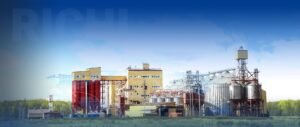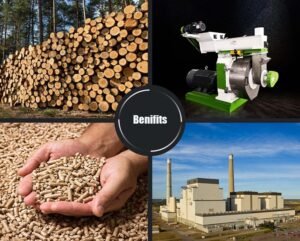
Using an alfalfa feed pellet machine offers several advantages for both feed producers and animal owners. This specialized equipment streamlines the process of converting raw alfalfa and other materials into compacted pellets suitable for animal consumption.

Here are the key advantages of using an alfalfa feed pellet machine:
Enhanced Nutrient Density: Pelletizing alfalfa enhances its nutrient density by compressing the material, resulting in a higher concentration of vitamins, minerals, and protein per pellet. Animals receive more nutrients in each serving, promoting better health and growth.
Consistency in Nutritional Content: Pellet machines ensure uniformity in pellet size and composition, which translates to consistent nutritional content in every pellet. This predictability facilitates precise feeding and prevents nutrient imbalances.
Improved Digestibility: The pelletization process breaks down the cell walls of alfalfa, making its nutrients more accessible and easier for animals to digest. This can lead to better absorption of nutrients and improved feed efficiency.
Reduced Storage Space: Pellets occupy less storage space compared to loose hay. This is particularly advantageous for large-scale feed producers and animal owners with limited storage facilities.
Enhanced Handling and Transport: Pellets are more compact and less cumbersome to handle and transport than bulky bales of hay. This makes feed management and distribution more efficient.
Minimized Waste: The uniformity of pellets reduces waste caused by selective feeding. Animals can’t easily pick and choose certain components, ensuring they consume a balanced diet.
Improved Feeding Control: Pellets can be formulated to meet specific nutritional requirements, allowing feed producers to create custom blends tailored to different animals’ needs.
Reduced Dust and Allergens: The pelletization process can reduce dust and allergens commonly associated with loose hay. This promotes better respiratory health for both animals and handlers.
Extended Shelf Life: Pellets have a longer shelf life compared to loose hay, reducing the risk of spoilage and waste due to mold or deterioration.
Economical Feed Conversion: The concentrated nutrient content of pellets can lead to improved feed conversion rates, meaning animals can convert feed into body mass more efficiently.
Ease of Portion Control: Uniform pellet size simplifies portion control, allowing for precise feeding and the ability to adjust rations as needed.
Reduced Feeding Labor: Pellets can be dispensed using automated feeders, reducing the need for manual labor and ensuring consistent feeding schedules.
Versatility in Ingredients: Pellet machines can process a variety of ingredients, allowing for the inclusion of other nutrients and additives to create specialized feed formulations.
Support for Specific Animal Groups: Pellets can be tailored for different animal species, life stages, and dietary needs, ensuring each group receives optimal nutrition.
Environmental Benefits: Pellets are easier to store and transport, potentially reducing the carbon footprint associated with feed distribution.

In conclusion, using an alfalfa feed pellet machine offers numerous advantages, from increased nutrient density and improved digestibility to reduced waste and enhanced feeding control. This technology benefits both feed producers and animal owners by providing a convenient, efficient, and nutritionally balanced feed option that supports the health and well-being of animals.
For more information about alfalfa pellet machine, pls click Richi website.







